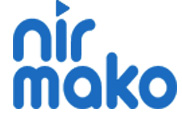How to hire the perfect employeeFor the business, through 4 preparatory actions?
In large organizations, it is said that their biggest asset is the employees. This is true even more so when it comes to small and medium-sized businesses. After all, when a business owner does everything, at some point he encounters a glass ceiling that cannot be broken without working hands. But coming to the conclusion that you have to hire employees is one thing, and hiring the perfect fit for the business is another.
Small businesses often spend time and money on fundraising processes that don’t justify the investment—and that can have fatal consequences. Unlike a large organization that employs hundreds of workers, in a small and medium business, depending on each employee is crucial. When hiring an employee for a business fails productivity and performance can be impaired, sometimes significantly. And that’s before we even mentioned the extra resources that need to be invested in order to recruit a new employee after the previous recruitment failed.
Do you want to dramatically increase the chances of success of the recruitment process? Before you want to publish a required ad, here are 4 preparatory steps to help you find the ultimate employee for your business.
Create an accurate job description
To find the perfect employee, you need to know what to look for, and to search effectively you need to create an accurate job description first. “Sales Rep” or “Customer Service” is not a job title, but a title. A role definition includes the contents of the role and responsibilities: What actions does the employee perform? What are the required skills? What are the main indicators? For example, a sales representative of electronics products is supposed to spend 20 calls to new customers a day, get to know all the company’s electrical products and advantages, know how to work with the CRM of the business and other technological systems and more.
In order for the job title to be connected to business practice and real needs on the ground, job requirements can be used as a basis from job ads of similar jobs, and they must “dress” the unique needs of your business.
Build the business DNA
In a follow-up article, Dorit Halfon, the Antric Echo, will expand the subject. We are all familiar with the term “organizational culture”, which refers to the totality of values, norms and rules that affect the conduct of employees in an organization. Even in small businesses it is important to foster an organizational culture, and if you have not yet defined it then recruiting a new employee is a good opportunity to do it: Surveys over the years show that nearly 80% of candidates take corporate culture into account before making a decision. Even when you are working in a small and medium-sized business.
Is the corporate culture of the business oriented toward people and teamwork? Encouraging independent learning? How flexible is it and includes dynamic role definitions (in which employees perform “both” and can develop quickly)? Does your business support remote work?
Organizational culture is based on building a vision and key values, and its definition will help you attract the right employees to your business. If, for example, corporate culture is based on independent learning and does not encourage remote work, employees looking for hybrid work will be less relevant.


Solving the trial dilemma
One of the dilemmas of recruiting a new employee for the business is his degree of experience. Do you hire experienced and experienced employees? On the one hand, we hope that the experience will help them get into the role more smoothly and deliver better performance. On the other hand, their salary requirements are likely to be higher and they will have a lower willingness to change professional habits that have already been established. Do you want to hire juniors who are at the beginning of their professional career? On the one hand, their salary requirements will be lower, the motivation will probably be high, and the ability to shape their professional conduct according to the organizational culture will be high. On the other hand, the process of learning of the Junors may be longer, and in the absence of previous experience they arrive without proven receipts in the role.
So what do we do? Of course, the answer varies according to the needs of the business – from the salary budget and business goals to the organizational culture you defined. Either way, it is important to take into account all the considerations, and to define in advance the desired level of experience.
Use tools for effective diagnosis
As we have already understood, the potential damage that causes a hiring error can be enormous, and in a small and medium business there is very little margin for error. Therefore, once you have defined the requirements of the business and the role, it is important to make sure that you choose employees who are “tailor-made” for these needs. How do you do that? By choosing a diagnostic tool that will enable you to build a personal and professional profile of the candidate – and to examine the degree of suitability for the profile of the business. Even if the use of diagnostic tools requires greater allocation of resources – the potential of successful recruitment that will contribute to business growth in the face of potential damage, should justify the investment.
There is a wide range of diagnostic tools that can help you with your work, from personality tests such as the DISC model to graphological analysis. Want to know more about the equipment? We will be happy to chat and share our experience with hundreds of small and medium businesses.
Bottom line, the end of the draft is in the first place. Dedicating the recruitment process just before you go will help you find the perfect match – for you and the employee.
